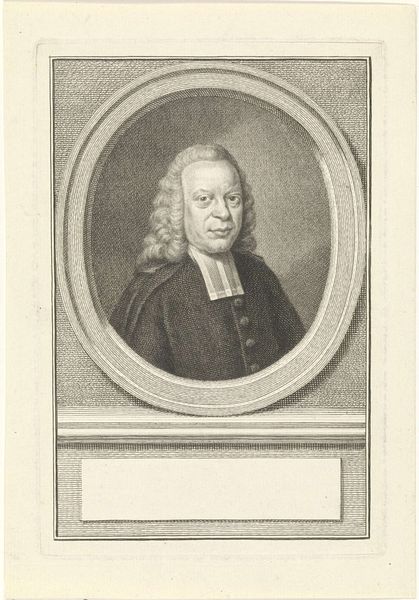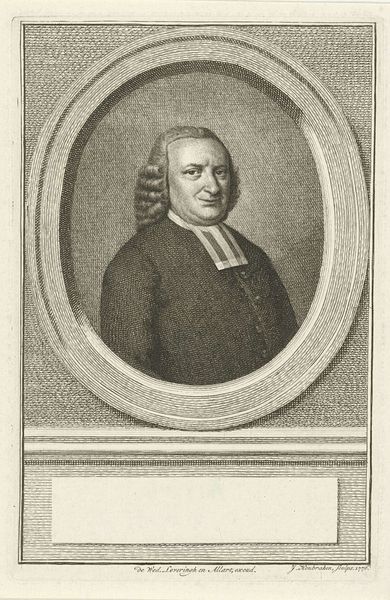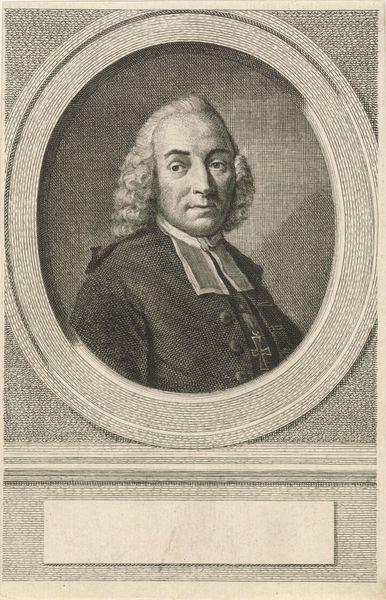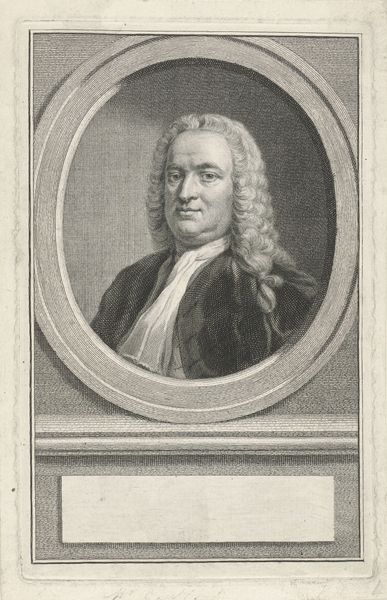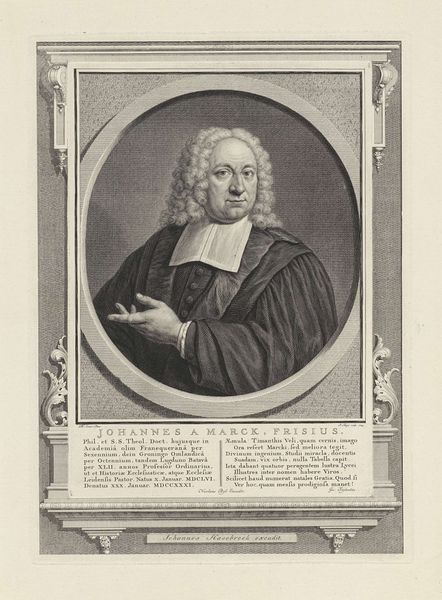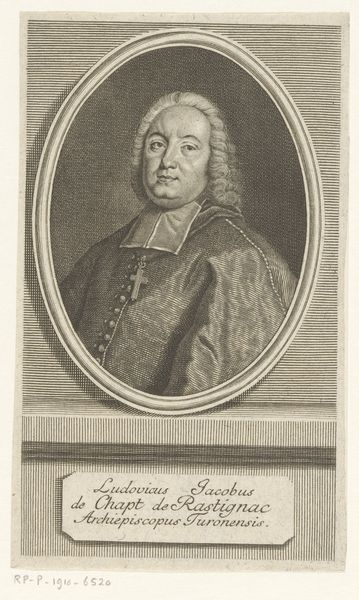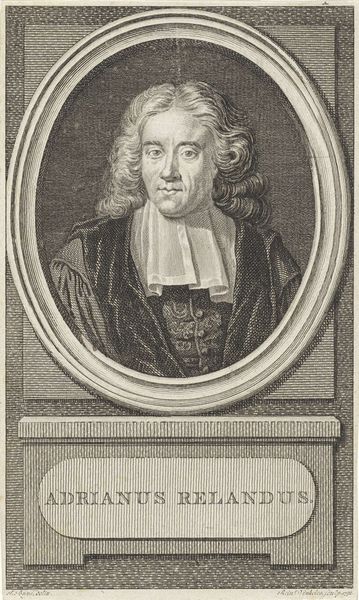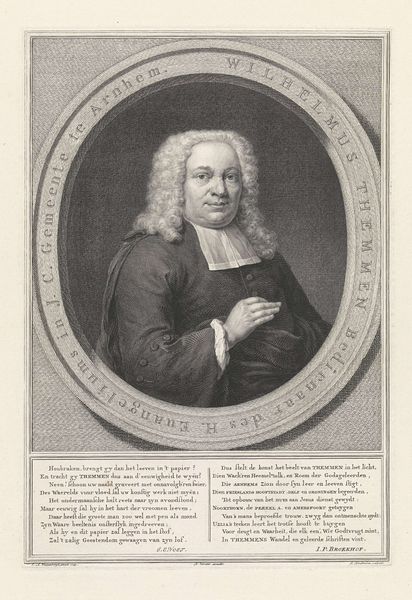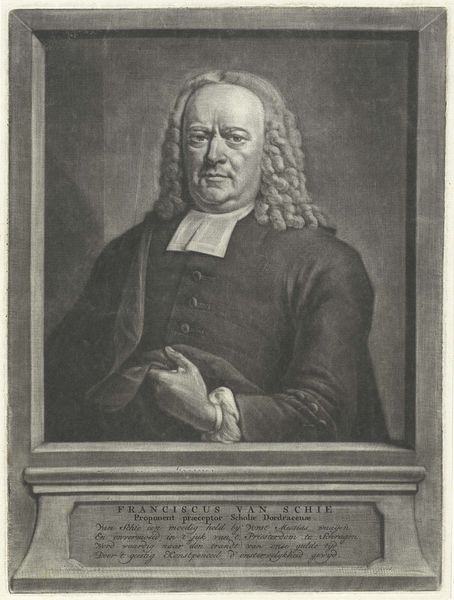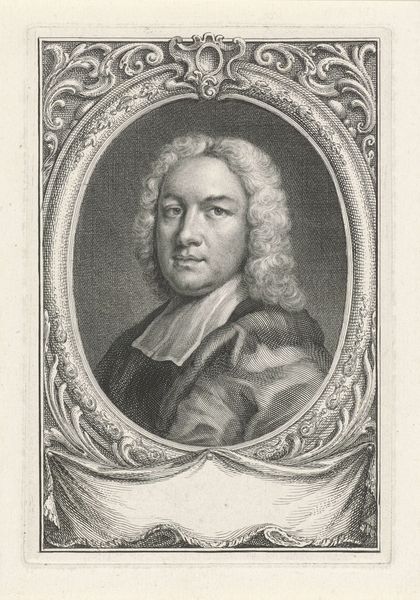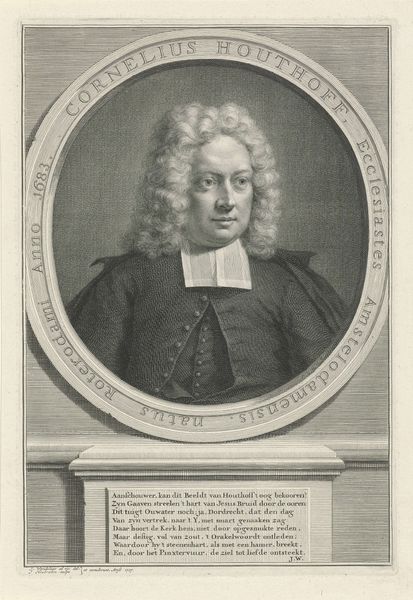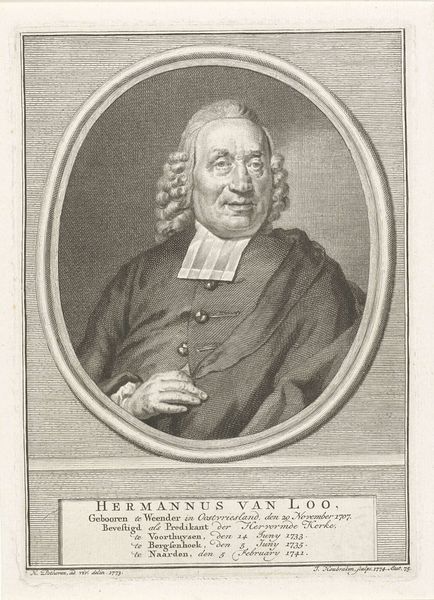
Dimensions: height 186 mm, width 127 mm
Copyright: Rijks Museum: Open Domain
Editor: This is "Portret van Jacobus Tijken," an engraving from 1769 by Jacob Houbraken, currently at the Rijksmuseum. There's a stillness and formality about it that feels very…official, almost like a document rather than a lively depiction. What do you see in this piece? Curator: The engraving presents a compelling glimpse into the 18th century through symbolic language. Look closely at the oval frame – what does it evoke? The visual language employed here presents Jacobus Tijken within a structure. Think of this as a window into history, or even a mirror reflecting societal values. Editor: That makes sense! So, the oval suggests… containment and reverence? Like he's set apart? Curator: Precisely. And notice the way he's dressed. The details of his attire speak volumes about status and profession, particularly the recognizable clerical collar of the period. How does that influence your interpretation? Editor: It reinforces the "official" feel, lending an air of authority. It signifies religious commitment. I imagine the clothes symbolize his profession as clergyman? Curator: Indeed! His clothing creates an impression, while reminding viewers about historical and religious contexts, including a reminder of what his figure represented. It serves as a reminder of the sitter's role and values during that era. Does understanding the symbolic layers enrich your understanding? Editor: Definitely. It shifts my focus from the surface representation to the underlying meanings and context. Thanks! Curator: My pleasure! Considering the use of symbols can create new possibilities to learn and create cultural connections and understandings across time.
Comments
No comments
Be the first to comment and join the conversation on the ultimate creative platform.
